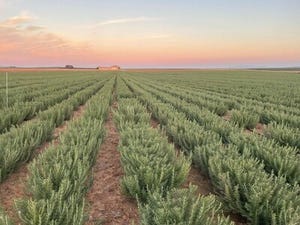Dairy assistance sees improvement in 2018
Next farm bill also offers significant boost in dairy safety net to help struggling producers.

More than 21,400 dairy producers opted for coverage through the Margin Protection Program for Dairy (MPP-Dairy) in 2018, up by more than 2,000 producers from the previous year. This U.S. Department of Agriculture program was significantly updated in February by the Bipartisan Budget Act of 2018, and Agriculture Secretary Sonny Perdue said those changes attracted more producers to enroll in the safety net program or to increase their coverage.
“Dairy producers have long been battling low prices, high input costs and a surplus in the global market. Unfortunately, the 2014 farm bill did not provide a sufficient safety net to dairy producers, and so it was timely that Congress opted to provide additional support through the Margin Protection Program last February,” Perdue said. “We are pleased to announce that roughly half of our nation’s dairy producers enrolled for coverage under this reworked program, providing additional capital to keep some of these folks afloat. We understand that this is not a total fix nor long-term solution for dairy producers, but we are glad that the Farm Service Agency was able to spring into action to get these critical payments out the door just a few months after the legislative changes were enacted. USDA is looking forward to prioritizing the implementation of the Dairy Margin Coverage Program, the new longer-term, more comprehensive dairy safety net program, following the passage of the 2018 farm bill.”
MPP-Dairy, administered by USDA’s Farm Service Agency, protects dairy producers by paying them when the difference between the national all-milk price and the national average feed cost (the margin) falls below a certain dollar amount elected by the producer.
Many producers received their first MPP-Dairy payments in February 2018, and most producers who have chosen premium coverage levels of $7.00, $7.50 or $8.00 have seen a payment in every month since February. For these seven months, more than $253 million in payments have been made to dairy operators.
Jim Mulhern, president and chief executive officer of the National Milk Producers Federation, estimated payments at an average of 44 cents/cwt., thanks to the adjustments made to MPP.
The Bipartisan Budget Act made several changes, including: providing monthly payments instead of bimonthly; permitting dairy operations that had not participated before to enroll in the program; covering 5 million lb. of production instead of 4 million on the Tier 1 premium schedule; significantly reducing premiums per hundredweight under the Tier 1 premium schedule, and exempting limited-resource, beginning, veteran and disadvantaged dairy operators from paying the annual administrative fee.
Dairy has been noted as a big winner in the 2018 farm bill, with new programs that assist dairy producers facing low prices. Important policy reforms include more affordable and higher coverage levels in the new Dairy Margin Coverage Program (renamed from the MPP) that will allow all dairy producers to insure margins up to $9.50/cwt. on their Tier I (first 5 million lb.) production history. It also provides lower-cost $5.00 margin coverage, allowing farm operations wishing to cover more than 5 million lb. of production to have a higher level of affordable catastrophic protection.
The Dairy Margin Coverage Program program allows producers to receive a 25% discount on premiums paid to USDA if they lock in their coverage for the entirety of the farm bill (calendar years 2019-23). The 2018 farm bill also allows dairy operations to receive a 75% credit of the net MPP premium paid to USDA (premium fees minus indemnity payments) from 2014 to 2017 that will be applied to future Dairy Margin Coverage Program premiums. If farmers don’t wish to use that credit, they can received 50% of their net premiums from 2014 to 2017 as a direct refund.
In the initial years of the 2014 farm bill, many producers paid premiums into the program but did not receive anything back despite prices being low.
Mulhern said, overall, the significant improvements will build on the enhancements made in 2018 to help small, medium and large producers from coast to coast and make the safety net much more effective. Mulhern said if the 2018 farm bill would have been in effect for this year, it would issue average payments of $1.70 for the first 5 million lb. of milk instead of the 44 cents/cwt. it did.
About the Author(s)
You May Also Like





